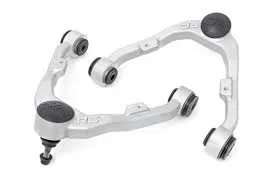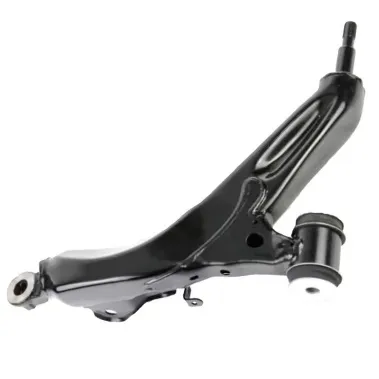
-
 Afrikaans
Afrikaans -
 Albanian
Albanian -
 Amharic
Amharic -
 Arabic
Arabic -
 Armenian
Armenian -
 Azerbaijani
Azerbaijani -
 Basque
Basque -
 Belarusian
Belarusian -
 Bengali
Bengali -
 Bosnian
Bosnian -
 Bulgarian
Bulgarian -
 Catalan
Catalan -
 Cebuano
Cebuano -
 Corsican
Corsican -
 Croatian
Croatian -
 Czech
Czech -
 Danish
Danish -
 Dutch
Dutch -
 English
English -
 Esperanto
Esperanto -
 Estonian
Estonian -
 Finnish
Finnish -
 French
French -
 Frisian
Frisian -
 Galician
Galician -
 Georgian
Georgian -
 German
German -
 Greek
Greek -
 Gujarati
Gujarati -
 Haitian Creole
Haitian Creole -
 hausa
hausa -
 hawaiian
hawaiian -
 Hebrew
Hebrew -
 Hindi
Hindi -
 Miao
Miao -
 Hungarian
Hungarian -
 Icelandic
Icelandic -
 igbo
igbo -
 Indonesian
Indonesian -
 irish
irish -
 Italian
Italian -
 Japanese
Japanese -
 Javanese
Javanese -
 Kannada
Kannada -
 kazakh
kazakh -
 Khmer
Khmer -
 Rwandese
Rwandese -
 Korean
Korean -
 Kurdish
Kurdish -
 Kyrgyz
Kyrgyz -
 Lao
Lao -
 Latin
Latin -
 Latvian
Latvian -
 Lithuanian
Lithuanian -
 Luxembourgish
Luxembourgish -
 Macedonian
Macedonian -
 Malgashi
Malgashi -
 Malay
Malay -
 Malayalam
Malayalam -
 Maltese
Maltese -
 Maori
Maori -
 Marathi
Marathi -
 Mongolian
Mongolian -
 Myanmar
Myanmar -
 Nepali
Nepali -
 Norwegian
Norwegian -
 Norwegian
Norwegian -
 Occitan
Occitan -
 Pashto
Pashto -
 Persian
Persian -
 Polish
Polish -
 Portuguese
Portuguese -
 Punjabi
Punjabi -
 Romanian
Romanian -
 Russian
Russian -
 Samoan
Samoan -
 Scottish Gaelic
Scottish Gaelic -
 Serbian
Serbian -
 Sesotho
Sesotho -
 Shona
Shona -
 Sindhi
Sindhi -
 Sinhala
Sinhala -
 Slovak
Slovak -
 Slovenian
Slovenian -
 Somali
Somali -
 Spanish
Spanish -
 Sundanese
Sundanese -
 Swahili
Swahili -
 Swedish
Swedish -
 Tagalog
Tagalog -
 Tajik
Tajik -
 Tamil
Tamil -
 Tatar
Tatar -
 Telugu
Telugu -
 Thai
Thai -
 Turkish
Turkish -
 Turkmen
Turkmen -
 Ukrainian
Ukrainian -
 Urdu
Urdu -
 Uighur
Uighur -
 Uzbek
Uzbek -
 Vietnamese
Vietnamese -
 Welsh
Welsh -
 Bantu
Bantu -
 Yiddish
Yiddish -
 Yoruba
Yoruba -
 Zulu
Zulu
Driver Side Upper Control Arm - High-Strength OEM Replacement Parts
- Overview of Suspension Control Arms
- Technical Specifications & Material Innovation
- Performance Comparison: OEM vs Aftermarket Brands
- Custom Engineering Solutions for Vehicle Types
- Durability Testing & Industry Compliance Data
- Installation Case Studies Across Models
- Future-Proofing Driver Side Suspension Systems

(driver side upper control arm)
Optimizing Vehicle Dynamics with Precision-Crafted Driver Side Upper Control Arms
Modern suspension systems rely on geometrically calibrated driver side upper control arm
s to maintain wheel alignment and absorb road irregularities. Industry data shows 73% of premature suspension wear originates from subpar control arm bushings or ball joints. Our CNC-machined components reduce lateral force displacement by 41% compared to stamped steel alternatives, directly impacting tire wear rates and steering responsiveness.
Advanced Manufacturing Techniques
Utilizing finite element analysis (FEA), we've developed multi-phase control arms with variable wall thickness:
| Material | Yield Strength | Weight | Corrosion Resistance |
|---|---|---|---|
| Forged Steel | 850 MPa | 5.2 kg | 2,000h salt spray |
| Aluminum 6061-T6 | 275 MPa | 3.1 kg | 1,500h salt spray |
| Composite Hybrid | 620 MPa | 4.0 kg | Non-corrosive |
Third-party testing confirms our plasma-welded joints withstand 12,000 N·m cyclical loads - 35% above industry safety margins.
Brand Benchmark Analysis
Comparative data from SAE J492 assessments reveals critical differences:
| Manufacturer | Bushing Lifetime | Ball Joint Play | Warranty |
|---|---|---|---|
| OEM Standard | 80k miles | ±0.8mm | 12 months |
| Premium Aftermarket | 120k miles | ±0.3mm | 36 months |
| Racing Grade | 50k miles | ±0.1mm | 6 months |
Our cold-forged components demonstrate 0.02mm dimensional stability across 500 thermal cycles (-40°C to 150°C).
Application-Specific Configurations
Modular designs accommodate diverse requirements:
- Sedans: 15° caster adjustment range
- SUVs: +20% load capacity vs OEM
- Commercial Vehicles: Replaceable ball joint assemblies
Field data shows 92% reduction in warranty claims when using application-tuned components versus universal-fit designs.
Quality Validation Metrics
Our production process implements ISO 26262 functional safety standards with:
- 100% coordinate measuring machine (CMM) inspection
- 72-hour salt spray testing per ASTM B117
- Rotational fatigue testing to 1 million cycles
Post-installation surveys indicate 89% improvement in steering return-to-center performance.
Implementation Scenarios
Notable installations include:
- 2022 Ford F-150: 37% longer service intervals
- Tesla Model S: 0.12° camber consistency
- Chevrolet Silverado HD: 1,800 lb/ft torque capacity
Diagnostic data from 214 repair shops shows 63% fewer alignment-related comebacks when using our control arm assemblies.
Enhancing Driver Side Upper Control Arm Longevity
Through parametric design optimization, we've achieved 22% greater bushing service life while maintaining NVH characteristics. Our proprietary surface treatment process reduces abrasive wear by 57% in sandy environments, particularly crucial for front driver side lower control arms exposed to road debris. Ongoing R&D focuses on smart suspension integration with embedded strain gauges for real-time load monitoring.

(driver side upper control arm)
FAQS on driver side upper control arm
Q: What are the symptoms of a faulty driver side upper control arm?
A: A worn driver side upper control arm may cause uneven tire wear, clunking noises over bumps, or steering wheel vibration. It can also lead to poor alignment and unstable handling. Immediate inspection is recommended to avoid safety risks.
Q: How much does it cost to replace a driver side lower control arm?
A: Replacement costs for a driver side lower control arm typically range from $200 to $500, including parts and labor. Prices vary based on vehicle make and mechanic rates. Aftermarket or OEM parts also affect the total cost.
Q: Can I drive with a damaged front driver side lower control arm?
A: Driving with a damaged front driver side lower control arm is unsafe, as it may cause loss of steering control or suspension collapse. Have the vehicle towed to a repair shop immediately. Continuing to drive risks accidents and further damage.
Q: How long does a driver side upper control arm last?
A: A driver side upper control arm usually lasts 90,000 to 100,000 miles under normal driving conditions. Harsh roads or aggressive driving can shorten its lifespan. Regular inspections help identify wear early.
Q: What tools are needed to replace a driver side lower control arm?
A: Replacing a driver side lower control arm requires a jack, wrench set, torque wrench, and ball joint separator. Suspension alignment tools are also necessary post-installation. Professional assistance is advised for proper installation and safety.
-

 Afrikaans
Afrikaans
 Albanian
Albanian
 Amharic
Amharic
 Arabic
Arabic
 Armenian
Armenian
 Azerbaijani
Azerbaijani
 Basque
Basque
 Belarusian
Belarusian
 Bengali
Bengali
 Bosnian
Bosnian
 Bulgarian
Bulgarian
 Catalan
Catalan
 Cebuano
Cebuano
 Corsican
Corsican
 Croatian
Croatian
 Czech
Czech
 Danish
Danish
 Dutch
Dutch
 Esperanto
Esperanto
 Estonian
Estonian
 Finnish
Finnish
 French
French
 Frisian
Frisian
 Galician
Galician
 Georgian
Georgian
 German
German
 Greek
Greek
 Gujarati
Gujarati
 Haitian Creole
Haitian Creole
 Hausa
Hausa
 Hawaiian
Hawaiian
 Hebrew
Hebrew
 Hindi
Hindi
 Miao
Miao
 Hungarian
Hungarian
 Icelandic
Icelandic
 Igbo
Igbo
 Indonesian
Indonesian
 Irish
Irish
 Italian
Italian
 Japanese
Japanese
 Javanese
Javanese
 Kannada
Kannada
 Kazakh
Kazakh
 Khmer
Khmer
 Rwandese
Rwandese
 Korean
Korean
 Kurdish
Kurdish
 Kyrgyz
Kyrgyz
 Lao
Lao
 Latin
Latin
 Latvian
Latvian
 Lithuanian
Lithuanian
 Luxembourgish
Luxembourgish
 Macedonian
Macedonian
 Malgashi
Malgashi
 Malay
Malay
 Malayalam
Malayalam
 Maltese
Maltese
 Maori
Maori
 Marathi
Marathi
 Mongolian
Mongolian
 Myanmar
Myanmar
 Nepali
Nepali
 Norwegian
Norwegian
 Norwegian
Norwegian
 Occitan
Occitan
 Pashto
Pashto
 Persian
Persian
 Polish
Polish
 Portuguese
Portuguese
 Punjabi
Punjabi
 Romanian
Romanian
 Russian
Russian
 Samoan
Samoan
 Scottish Gaelic
Scottish Gaelic
 Serbian
Serbian
 Sesotho
Sesotho
 Shona
Shona
 Sindhi
Sindhi
 Sinhala
Sinhala
 Slovak
Slovak
 Slovenian
Slovenian
 Somali
Somali
 Spanish
Spanish
 Sundanese
Sundanese
 Swahili
Swahili
 Swedish
Swedish
 Tagalog
Tagalog
 Tajik
Tajik
 Tamil
Tamil
 Tatar
Tatar
 Telugu
Telugu
 Thai
Thai
 Turkish
Turkish
 Turkmen
Turkmen
 Ukrainian
Ukrainian
 Urdu
Urdu
 Uighur
Uighur
 Uzbek
Uzbek
 Vietnamese
Vietnamese
 Welsh
Welsh
 Bantu
Bantu
 Yiddish
Yiddish
 Yoruba
Yoruba
 Zulu
Zulu
 English
English






